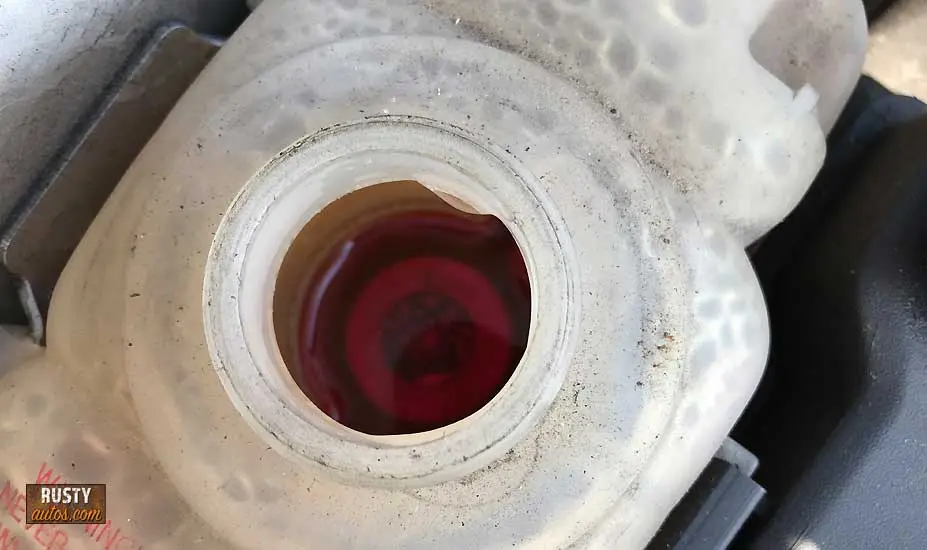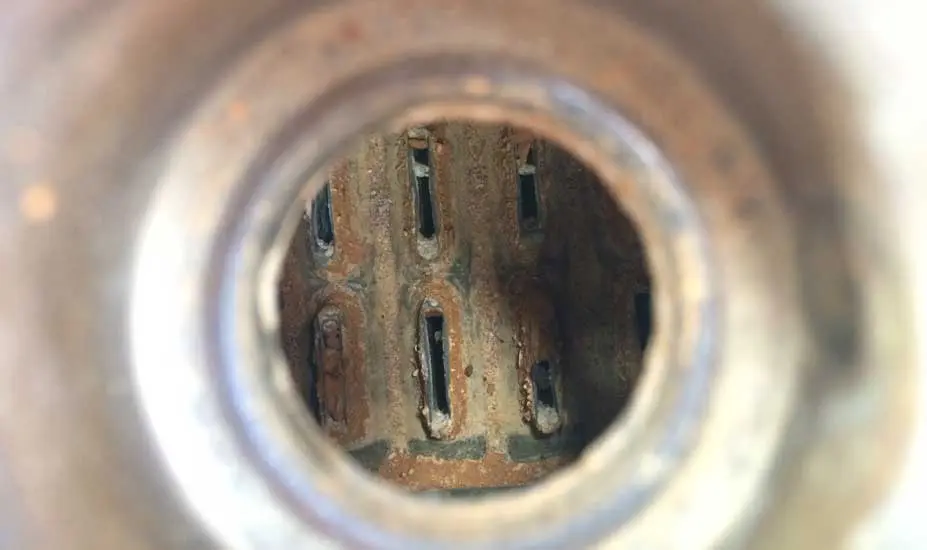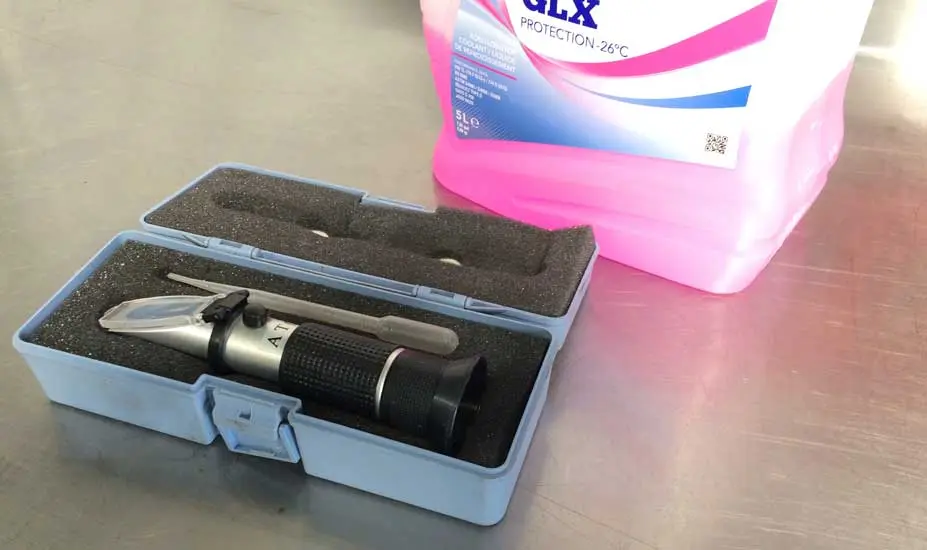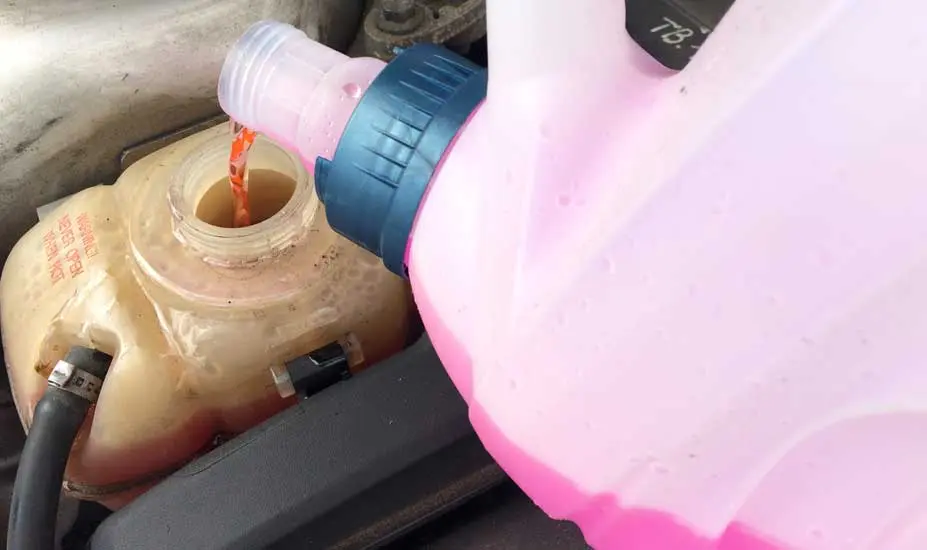Warning light on, low coolant level, but what if you’re in a pinch and you don’t have coolant, but you do have water?
It is common practice to top up Mercedes coolant with water. However, constant top-ups using water will weaken the cooling, antifreeze, lubricating, and anti-corrosion protection.
In this post, you’ll learn when it’s Okay to top up a Mercedes with plain water. You’ll also learn how to test the strength of your coolant.

Avoid Constant Water Top Ups
It’s Okay to top up Mercedes coolant using just water; however, using coolant to top up is always best. The problem with using water is it dilutes the coolant strength. I should point out that when we say coolant, we are also talking about antifreeze; they are one and the same.
You’ll find a link to Mercedes-compatible coolants here on the consumables page.

Coolant is a concoction of chemicals designed to perform four main tasks:
- To cool
- Offer freeze protection
- Lubricate
- Prevent engine corrosion
To cool – Using plain water as coolant will challenge your Mercedes coolant system. Coolant is specially formulated to have a higher boiling point, and that’s a good thing. In the dead heat of summer or a five-mile traffic jam.
Allowing a car to overheat risks blowing the head gasket or, worse, warping the cylinder head.
Having the correct quantity and strength of coolant will make the difference between steam by the side of the highway or sitting pretty behind the wheel with the a/c on full.
Antifreeze – The antifreeze additive offers frost protection down to -35F; constantly topping up with plain water reduces the effectiveness of the antifreeze, effectively increasing the chances of frost damage.
Frost, as you know, causes water to freeze and expand; when the water inside an engine freezes, it cracks the cylinder or block, causing thousands of dollars in damage. Antifreeze is super important.
Lubrication – Your Mercedes coolant system employs a pump to move coolant around the system, the pump shaft needs lubrication, and rubber seals also need to be lubricated. Without the correct quantity of lube in the coolant, seals, and pumps are likely to fail prematurely.

Anti-corrosive protection – Corrosion isn’t just for the bodywork; without the correct quantity of anticorrosive additives in the coolant, the inside of the engine would begin to corrode. Head gaskets are usually the first to corrode.
Corrosion is difficult to remove and causes issues like pump failure and total engine failure in really severe cases.
How To Test Mercedes Coolant (or any coolant)
Visually check your coolant; it comes in many different colors, pink, blue, green, and yellow. Color is less important than how it looks. It should be strong in color. A weak washy-looking color indicates the coolant may be weak, old and exposing your Mercedes to frost damage.

Coolant should be changed every three years; old coolant loses its ability to protect, and worse than that, it becomes acidic. The acidic coolant eats head gaskets, seals.
In severe cases, the engine metal is eroded, and this type of damage can’t be repaired; the engine is totaled.
If your coolant is over three years old, change it out.
You can check the acidity of the coolant using a voltmeter.
Set the multimeter to volts, place the black probe on the chassis ground, and place the tip of the probe in the coolant. A reading close to or above one volt means it’s eating your motor.
However, it’s more common to simply check the strength of your coolant. Three different tools are commonly used.
- Refractometer
- Disc type tester
- Dip strips
I use a Refractometer; it’s fast and accurate. Any reading below minus 20 F is good.
The disc-type tester is super user-friendly; it’s a turkey baster-type tool with floating discs inside a clear tube. To test your coolant, suck a sample of coolant from your reservoir using the tool, and the disk that floats inside the coolant-filled clear tube identifies the antifreeze strength. Super easy to use.
Dip strips are user-friendly too but a little wasteful as they’re one-time use. To use them, dip the strip into the coolant and read the strip color.
You can check out all these tools on the Coolant system tools page.

Coolant is sold as pre-mixed or as a concentrate. The concentrate is generally purchased by owners that live in extremely cold conditions. Using the concentrate allows the user to mix the coolant to a max of 70% coolant concentrate with 30% distilled water. This offers protection below -35 F.
Regular coolant is mixed at a ratio of 50:50. Meaning, for example. This typically offers antifreeze protection down to -35 F.

